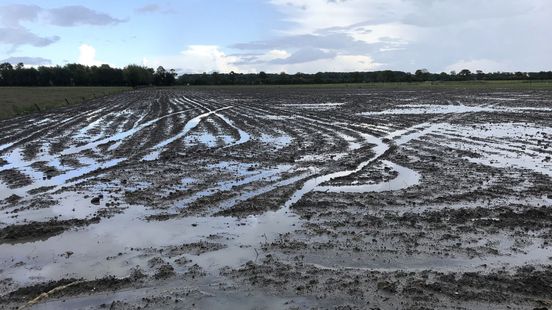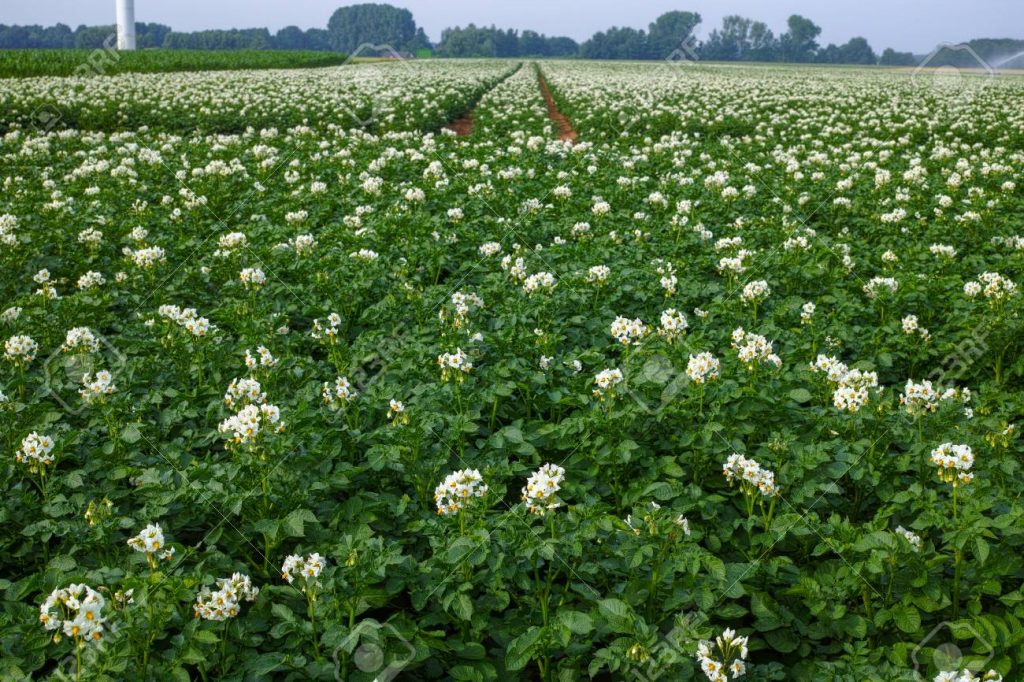Situation of old season’s potatoes in the barns
Quality level is still acceptable for processing and sugar contents remain under control.
The available volume of pre-contracted potatoes is shrinking pretty fast and farmers claim higher prices for spot deals. In the BeNeLux we now note 25 €/100 kg ex farm.
That is about twice as high as in September last year…..
It is expected that all fresh potatoes of harvest season 2021/22 will be processed by the beginning of July.
Situation of new season’s potatoes
When compared to last year an extra 10-15% of early varieties have been planted. Those potatoes cannot be stored and must be consumed or processed immediately after being harvested.
About main crop varieties no figures are available yet, as farmers are still planting at this moment. It is expected that the total acreage will not exceed the past 5-years average.
Major cause of concern at this moment : lack of rainfall. In Belgium and South of Holland we are passing the driest springtime since over 50 years. Weatherforecasts at this moment do
not expect any significant rainfall for the next 15 days, which could seriously jeopardize both parts of harvest : early varieties and main crop. As a result of it, the future’s markets have gone into red alert and prices for April 2023 have passed 25 €/100 kg ex farm already. This should be interpreted as : both farmers and actors in the market are most worried about possible lower outputs and are investigating into getting covered on long term.
Situation at processing
The side-effects of the war in Ukraine remain playing a very important role in potato processing :
The sudden interruption of deliveries of sunflower oil jeopardizes continuity of processing in nearly all European potato processing factories (frozen french fries). As production of potato flakes in most cases is linked to production of prefried frozen french fries, the possibility of lower output is also valid for flakes and granules production.
Alternative oils prices obviously have reacted on the shortage of sunflower oil and have reached levels which are over 50% higher than in the beginning of the year.
The use of alternative oils (rapeseed, soy, palm) is not obvious for several reasons. Blending oils created a number of technical issues which cannot be solved in a short span of time. The pure use of alternative oils -wherever possible- creates problems with nutritional values, taste, texture and declarations on the packaging. Possible corrections easily require 3-4 months of time and most European governments have accepted to keep using the declaration of sunflower oil also for products prefried in other oils, prevailing a clear indication for end users is given at the point of sale. How this will be done in practice is not clear at this moment.
The availability of alternative oil is far from clear : Indonesian government has imposed an export embargo on palm oils in order to avoid sky high price increases for their local consumers. Even Malaysia does not have enough overcapacity to cover the unexpected gap created by sunflower oil and the logistics are not available to bring such huge quantities to Europe over such a short span of time. rices for natural gas after reaching unseen levels in the past weeks and months have eased down since Gazprom officials declared not to have any intention to cut off supplies to Europe. Still there is an atmosphere of suspicion if there is not a hidden agenda behind those words. The smallest comment or fact has an immediate double digit impact on the price level.
Electric power follows the trend as set by natural gas. When less gas is used, more electricity is used, so the price fixing is very clear but opportunistic.
Price for diesel (> 2 €/liter) is regularly breaking new all times’ records, so that road transport of fresh potatoes, packing materials, oils, etc…..has become a worrying and unreliable factor, especially when linked to the always valid shortage of experienced truck drivers.
Situation in transport
Considerably higher diesel prices and their effect have been mentioned above.
China’s zero-Covid-strategy is causing a major shock wave in intercontinental ocean freight once again. Over 500 container vessels got stuck as the port of Shanghai is as good as unaccessible. It will affect the global availability of empty containers and shipping lines will cancel many journeys after taking a number of vessels out of operation during an unknown period of time.
From the past months we have learnt what this will mean : further increases of ocean freight and unstability in transport as such.
Result
The markets remain extremely nervous not only because of present situation of full occupation of processing capacity even at very high cost price level, but also anticipating on possible fundamental problems at the start of the new potato season. Putting everything together there should not be much hope for fast decreasing prices for any type of potato products in the new season.









